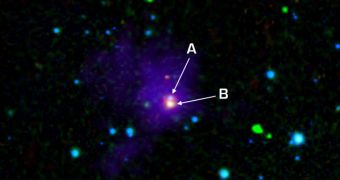The Spitzer Space Telescope is one of the most renowned and important telescopes that the American space agency NASA currently has in orbit. Although the stage of its mission in which it observed the sky at super-low temperatures is over, it is still very capable of performing competitive science. This was again demonstrated recently, when the instrument revealed the youngest, brown dwarf ever observed across the Universe. If the find is confirmed using other telescopes as well, then the find could contribute to clarify one long-standing mystery about how this class of objects forms.
When it comes to analyzing temperatures and masses, brown dwarfs are very difficult to study, mostly because they are placed somewhere between giant gas planets and small stars when it comes to these two factors. According to experts at the NASA Jet Propulsion Laboratory (JPL), in Pasadena, California, the dwarfs are a lot lighter and cooler than normal stars, but a lot larger and warmer than gas giants. So, astronomers have asked themselves for a very long time which of the two classes of bodies results in the brown dwarfs. Pros and cons for both origins have been laid on the table and weighed, but the new investigation could easily put an end to the scientific debate.
“We decided to go several steps back in the process when (brown dwarfs) are really hidden. During this step they would have an (opaque) envelope, a cocoon, and they would be easier to identify due to their strong infrared excesses. We have used this property to identify them. This is where Spitzer plays an important role because Spitzer can have a look inside these clouds. Without it this wouldn't have been possible,” David Barrado, an expert at the Madrid, Spain-based Centro de Astrobiologia, explains.
Barrado is also the lead author of a new paper detailing the finding, which appears in the latest issue of the respected scientific journal Astronomy & Astrophysics. The recently-found “proto brown dwarf,” the paper shows, has been discovered while still hiding in its stellar nursery, shrouded in dust and gas. The new structure has been named SSTB213 J041757, a typical, catchy name for an astronomical object. The Spitzer data was partially confirmed by the Calar Alto Observatory, in Spain. “It is a story that has been unfolding piece by piece. Sometimes nature takes its time to give up its secrets,” Barrado concludes.

 14 DAY TRIAL //
14 DAY TRIAL //